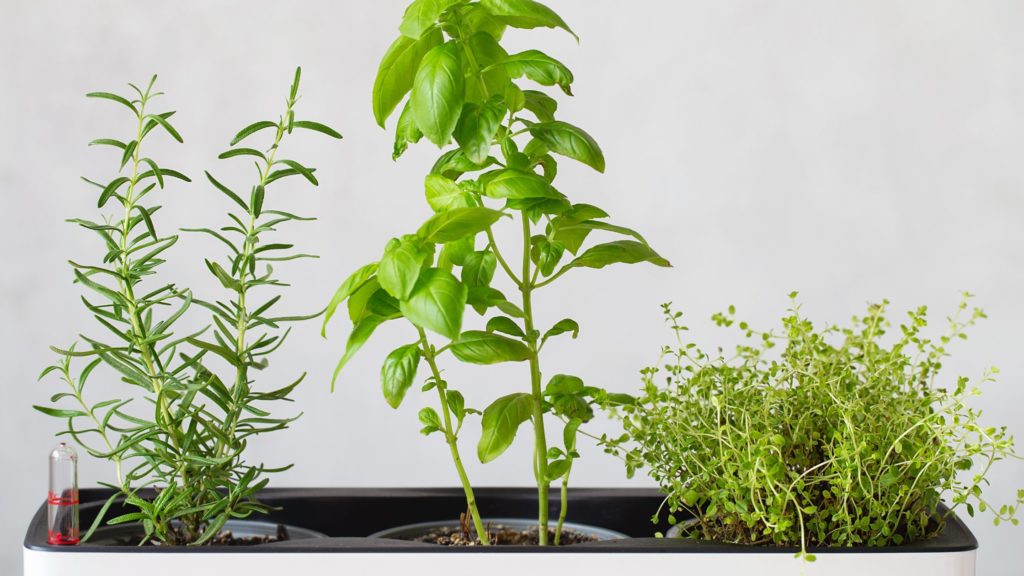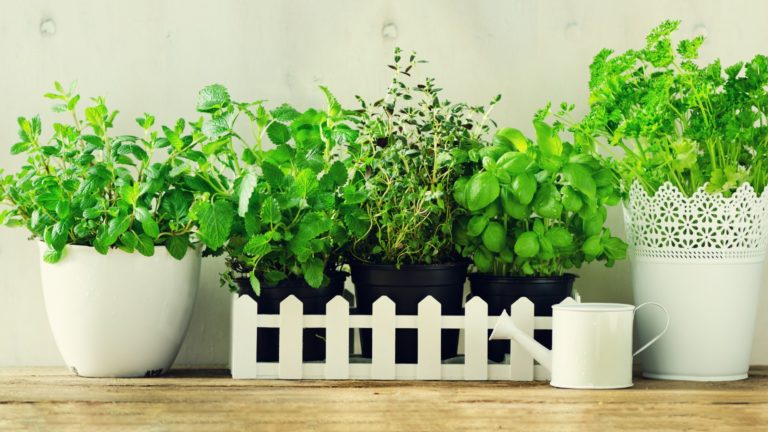Introduction: The Allure of Aromatic Herbs
We all adore the scent of fresh aromatic herbs wafting from a hearty meal. Whether it’s the rich aroma of basil on a Margherita pizza or the soothing scent of chamomile in a warm evening tea, these herbs add a burst of flavor and aroma that’s hard to resist.
But did you know that growing them in your kitchen is a straightforward process? In this comprehensive guide, we will explore the ins and outs of cultivating your aromatic herbs right in the heart of your home.
The Benefits of Kitchen Herb Gardening
Growing herbs in the kitchen doesn’t just appeal to the senses. There are myriad benefits to this endeavor:
- Immediate Access: Fresh herbs at your fingertips, any time you need them.
- Economical: A one-time investment can yield endless supplies.
- Organic and Clean: Control what goes into your plants and avoid harmful pesticides.
Choosing the Right Herbs for Your Kitchen
Certain aromatic herbs thrive better indoors. Here are the top contenders:
- Basil: A staple in Italian cuisine, it loves the warmth of kitchen windows.
- Chives: With their mild onion flavor, they’re versatile and easy to grow.
- Mint: Perfect for teas and garnishes, but it’s a vigorous grower, so monitor its spread.
- Parsley: A favorite in many dishes, it requires minimal maintenance.

Setting the Stage: Ideal Conditions for Growth
Understanding the basic needs of aromatic herbs is key to successful kitchen gardening:
- Light: Most herbs need at least 6 hours of sunlight. Position them near a sunny window or invest in grow lights.
- Soil: Use a premium potting mix. It ensures proper drainage and nutrient supply.
- Water: While herbs like moisture, overwatering can be detrimental. Ensure pots have drainage holes and water only when the soil feels dry.
- Temperature: Aromatic herbs prefer a temperature range of 60-70°F.
Planting and Care Instructions
- Planting: Use containers with drainage holes. Fill them with potting mix and plant seeds or young herb plants.
- Watering: Check the soil’s moisture regularly. Water thoroughly when the top inch feels dry.
- Pruning: Regularly trim your herbs to encourage bushy growth. Use the cuttings in your cooking!
- Fertilizing: Use an organic liquid fertilizer every 4-6 weeks for best results.
Pests and Problems: Nipping Them in the Bud
Like all plants, herbs might occasionally have pest or disease issues. Here’s how to tackle them:
- Aphids: Tiny green or black bugs. Wipe them off with a damp cloth or use insecticidal soap.
- Mildew: White powdery substance on leaves. Ensure good air circulation and avoid wetting the leaves.
- Root Rot: Caused by overwatering. Prevent it by ensuring proper drainage and watering practices.
Harvesting Your Aromatic Herbs
The joy of kitchen gardening culminates in the harvest. For best flavor:
- Harvest in the morning when the plant’s oils are most concentrated.
- Always use sharp scissors or pruners.
- Only take about one-third of the plant at a time to allow it to recover.
Extending the Life of Your Herbs: Preservation Techniques
After investing time and effort into growing your aromatic herbs, you’ll likely want to maximize their usage. Here’s how you can preserve them for later:
- Drying: The most common method. Bundle your herbs and hang them upside down in a cool, dry place. Once dried, store in airtight containers.
- Freezing: Ideal for maintaining flavor. Place chopped herbs in an ice cube tray, cover with water, and freeze. Use the ice cubes directly in your cooking.
- Making Herb Oils: Place your favorite herbs in a bottle and cover with olive oil. This not only preserves the herbs but also imparts their flavor to the oil.
Incorporating Aromatic Herbs in Daily Meals
One of the joys of having a kitchen garden is the instant access to fresh flavors. Here are some ideas to seamlessly integrate them into your meals:
- Infused Waters: Add mint, basil, or rosemary to your water jug for a refreshing twist.
- Herb Butter: Mix softened butter with chopped herbs like chives or parsley. Refrigerate and use on bread or in cooking.
- Salads and Dressings: Fresh herbs can elevate the taste of your salads. Also, blend them into dressings for an added punch.
- Soups and Stews: A sprig of thyme or rosemary can transform the flavors of your soups and stews. Just remember to remove the sprig before serving.
Remember, the versatility of aromatic herbs is only limited by your imagination. Explore, experiment, and enjoy the culinary magic they bring to your table.
Conclusion: Savoring the Fruits of Your Labor
Embarking on the journey of cultivating aromatic herbs in your kitchen transcends mere gardening. It’s about rejuvenating our connection to the earth, elevating our culinary experiences, and indulging our senses in the purest fragrances nature offers.
With every sprig and leaf, you not only enrich your meals but also infuse your living space with vitality and fragrance.
As you nurture these green wonders, you’ll find they, in turn, nurture your soul, well-being, and palate. Dive deep into this verdant adventure, and let your kitchen be the canvas where nature paints its most aromatic hues.


